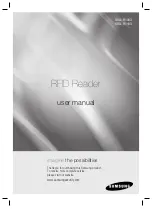
XPR-10 Series Two-Post Lifts
64
P/N 5900951 — Rev. D — May 2019
Perform an Operational Test
Before putting your Lift into normal operation, we recommend raising and lowering it several times with
a typical Vehicle on the Lift. This will help you get a feel for how to operate the controls and help get
any residual air out of the Hydraulic System (sometimes called “bleeding” the system).
⚠
DANGER
Automotive Lifts are dangerous tools when used by inexperienced or impaired
technicians. When you even hear the words “automotive lift,” your brain should
automatically register the fact that lifting a vehicle is a serious endeavor with life-
threatening risks if mandatory lifting precautions are ignored.
During the Operational Test, check for proper installation and operation. Do not raise any additional
Vehicles until a thorough Operational Test has been done with a typical Vehicle.
⚠
WARNING
Never raise a Vehicle whose weight exceeds the rated capacity of the Lift. Do not
leave the controls until the Lift is engaged on its Safety Locks. Only trained
personnel should raise or lower the Lift.
To perform an Operational Test
:
1.
Follow the instructions in
Raising a Vehicle
and
Lowering a Vehicle
to safely raise and lower
a Vehicle on the Lift.
⚠
WARNING
Be sure to follow the instructions carefully when it comes to contacting the
manufacturer’s recommended Lifting Points on the underside of the Vehicle. If you
do not, the Vehicle could become unstable and fall, which could damage the
Vehicle, damage the Lift, and injure or even kill anyone under the Vehicle.
2.
Adjust the Lift Arms under the Vehicle so the Adapters are
directly under
the Lifting Points for
the Vehicle you are raising.
If necessary, use the included Auxiliary Adapters for extra height.
3.
Raise the Lift until
just before
the Adapters make contact with the Lifting Points.
4.
Check the Arm Restraint Gears on all four Lift Arms to make sure they are engaged.
If they are not engaged, move the Lift Arms back and forth until they engage.
5.
Raise the Lift until the tires of the Vehicle are a few inches off the ground.
6.
Check to make sure all four Adapters are making solid contact with the Lifting Points.
If any of the Adapters are
not
making solid contact with the Lifting Points, carefully lower the Lift
and start over again; the Adapters
must
make solid contact with the Lifting Points.
7.
Raise the Vehicle approximately three feet (one meter) off the ground, then lower it back down.
Watch and listen as the Lift raises and then lowers. The Lift may move erratically or make some
odd noises the first couple of times you use it; this is normal.
Tip
Residual air in the Hydraulic System can cause the Lift to shake, move erratically, or
squeak; this is normal when you first start using the Lift. It will soon stop doing this,
as the Hydraulic System is self-bleeding.
8.
Wait for one minute.
NOTICE
The Power Unit is not a constant duty motor;
it cannot be run continuously
.
Summary of Contents for XPR-10 Series
Page 9: ...XPR 10 Series Two Post Lifts 9 P N 5900951 Rev D May 2019 Specifications ...
Page 77: ...XPR 10 Series Two Post Lifts 77 P N 5900951 Rev D May 2019 Labels ...
Page 78: ...XPR 10 Series Two Post Lifts 78 P N 5900951 Rev D May 2019 ...
Page 79: ...XPR 10 Series Two Post Lifts 79 P N 5900951 Rev D May 2019 ...
Page 81: ...XPR 10 Series Two Post Lifts 81 P N 5900951 Rev D May 2019 ...
Page 82: ...XPR 10 Series Two Post Lifts 82 P N 5900951 Rev D May 2019 ...
Page 83: ...XPR 10 Series Two Post Lifts 83 P N 5900951 Rev D May 2019 ...
Page 84: ...XPR 10 Series Two Post Lifts 84 P N 5900951 Rev D May 2019 ...
Page 85: ...XPR 10 Series Two Post Lifts 85 P N 5900951 Rev D May 2019 ...
Page 86: ...XPR 10 Series Two Post Lifts 86 P N 5900951 Rev D May 2019 ...
Page 87: ...XPR 10 Series Two Post Lifts 87 P N 5900951 Rev D May 2019 ...
Page 88: ...XPR 10 Series Two Post Lifts 88 P N 5900951 Rev D May 2019 ...
Page 91: ...XPR 10 Series Two Post Lifts 91 P N 5900951 Rev D May 2019 Maintenance Log ...
















































